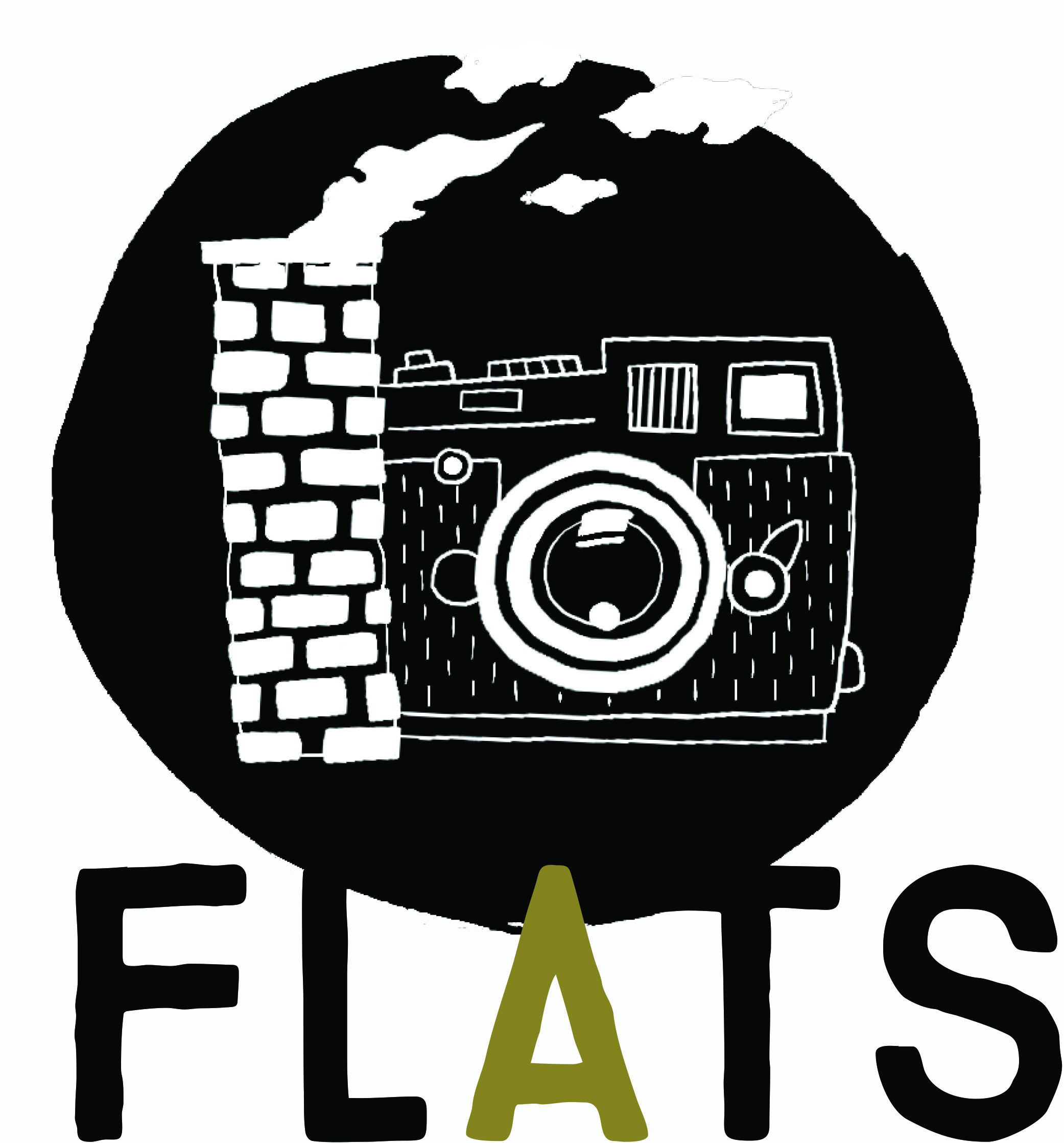WHERE THEY’RE AT
On View: Saturday, November 5, 2022-Saturday, December 3rd, 2022 / 201 Roberts St, Bay 1
Thursdays & Fridays 4pm-7pm / Saturdays & Sundays 12pm-5pm
Opening Party: Saturday, November 5th 5pm-9pm
Featuring the work of Debra Barrera, Theresa Escobedo, Brandon Tho Harris, & Emily Peacock
Curated by Jessi Bowman, FLATS Founder
Hosted by The Plant/Second Ward
Courtesy of the artist, Brandon Tho Harris
Where They’re At will focus on work that explores personal history; how the things we connect with early in our lives shape our understanding of the world and our relationship to it. From cultural traditions to personal effects to the people in our families that helped us become who we are, the artists in this show all celebrate the symbols that describe where they’re from and explain where they’re at.
Debra Barrera
Infinite Granite
The works in this series were inspired by growing up in my father’s gravestone and casket business, Barrera Monument Company. Some of my earliest memories were walking into a warehouse just like this one, peeking into open caskets, and playing hopscotch on granite slabs and bronze markers. Giant spools of thick beige vinyl would be fed into a machine, eventually becoming stencils: last names, death and birth dates, and early autocad plotted images of who someone was. These stencils would be placed over slabs of granite and marble then etched with a sandblaster. I grew up listening to a deafening echo of men carving names into ancient rocks. Caskets were satin lined rocketships and death was fed through a machine that my father cursed at in Spanish.
The main photographs embedded into these pieces are documentations of a performance where I took pieces of granite and enveloped them in the same satin fabric that my father used to upholster caskets. I submerged the swaddled rocks in water and my favorite bath salts as a burial and cleansing ritual. Ideals of westernized memorial traditions, notions of contemporary self care, and self preservation conflate. Where does death find us? It found my father when I was fourteen, it almost found me in 2021.
Alongside these documentations are images sourced from NASA’s Mars rover, an photo Jonathan Hopson took of the Pacific Ocean in 2007 before we met, stills from the Mexican horror film Veneno Para Las Hadas (Poison for the Fairies), and DALL•E 2 AI images of the phrases “Veneno Para Las Hadas” and “Gravestones in the Ocean Forever”.
Theresa Escobedo
For Where They’re At artist Theresa Escobedo draws upon the cultural heritage of her indigenous ancestry to create an ofrenda (offering) to Tlazolteotl - a complex and significant mesoamerican Earth-Mother patroness whose name is understood to mean “Eater of Filth.”
Believed to have been a Huaxtec fertility goddess from Northern Mexico’s Gulf Coast region later assimilated into the Mexica (Aztec) pantheon, Tlazolteotl represents seemingly oppositional forces: death and new life, fertility and decay, lust and sexual impurity as well as absolution and purification, and all aspects related to the Divine Feminine. She is the deity of the black fertile and fecund earth, turning all waste, physical and metaphysical, into rich life and is responsible for both encouraging and absolving the guilt of sinful deeds.
Central to this installation is a photographic reproduction of a Huaxtec sandstone figure representing Tlazolteol, created between 900-1450 A.D and acquired by the British Museum in 1879.
Combined with contemporary design practices, this ofrenda makes commentary on the ownership and accessibility of indigenous imagery and knowledge as well as the integration of the photographic medium into multi-disciplinary creative expressions, but foremost, is the product of an act of prayer through which the artist’s spiritual inheritances are recognized and reconciled.
As an 11th-generation Tejana, the act of crafting ofredas is foremost an offering to the artist’s ancestors, some of whose traceable and documented lineage in this land begins with the first civilian immigrants to settle in Texas and some whose bloodlines belong to the indigenous inhabitants of Coastal and Southern Texas, Northern and Central states of Mexico and elsewhere in Meso-America.
“My approach to making merges indigenous spiritual practices with contemporary influences and affirms the universality of spiritual pursuit as a generator of creative expression. Though the mediums employed to make these investigations may vary, each work I create attempts to visualize the hybrid cultural heritage borne from the blending of my indigenous and introduced Texan, Mexican, Canarian, Spanish, and Portuguese lineages.”
Brandon Tho Harris
As the child of Vietnamese war refugees, I am the product of war; displacement; and of the diaspora. I navigate a liminal space of longing for a home unknown to me. Grounding my work in the personal and the political, I aim to reveal the complexities of migration that are often left out of the existing discourse surrounding the global refugee crisis. I view my work as a collaboration between my family and me. I unpack and confront the trauma left behind after war as it reverberates throughout generations. By addressing the painful past of my family’s migration, it allows me to reconstruct parts of my identity that were concealed from me and create space for collective healing. I investigate the im/migrants notions of belonging, home, and homeland by weaving together stories and memories of the past and present. I explore my relationship to this land and trace the movement of Vietnamese migrants throughout Houston and the Gulf Coast. I seek to understand myself, my family, my home, and my community dispersed throughout the world. I use my work as a tool of resistance and uplift the narratives of im/migrants and refugees.
Emily Peacock
I am an extreme extrovert. Like, it's a problem. An “I was admitted to a psychiatric hospital during the isolation phase of the pandemic” kind of problem. And when the pandemic gates opened, I ran out into the world, tripping over my feet at times. Then, after ten years of living in different states, my sister and I moved back in together. We both struggle with mental health problems, and sometimes enable each other’s bad habits. I am truly impulsive; I was recently diagnosed as Bipolar 2, and everyone around me agreed that it made sense. Right now, I am making photographs that reflect my impulsive nature and my relationship with my sister. I may be a 38-year-old woman, mother, and responsible adult, but I am still a feral artist. It's complicated, like most things, and I use humor to talk about stigmatized subjects. And right now, I strongly believe we all need real life human connection.
FLATS programming is sponsored by Fresh Arts and is funded in part by the City of Houston through Houston Arts Alliance

